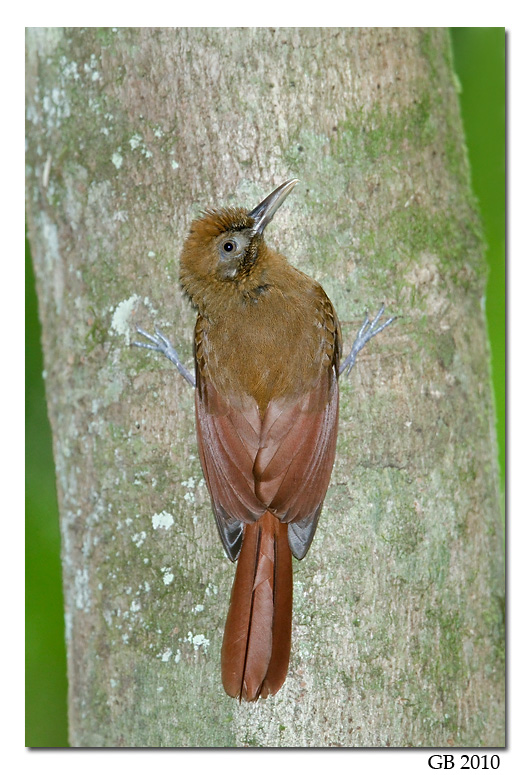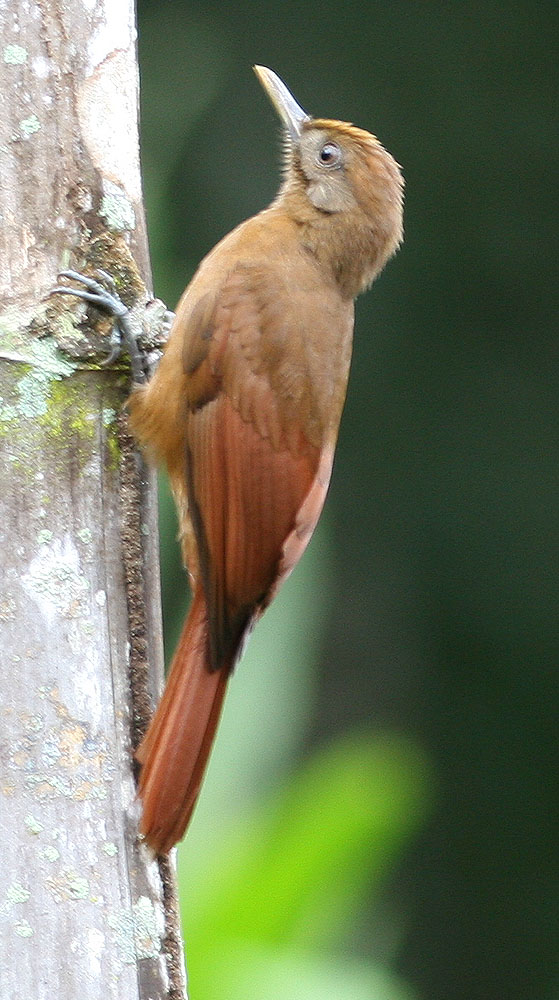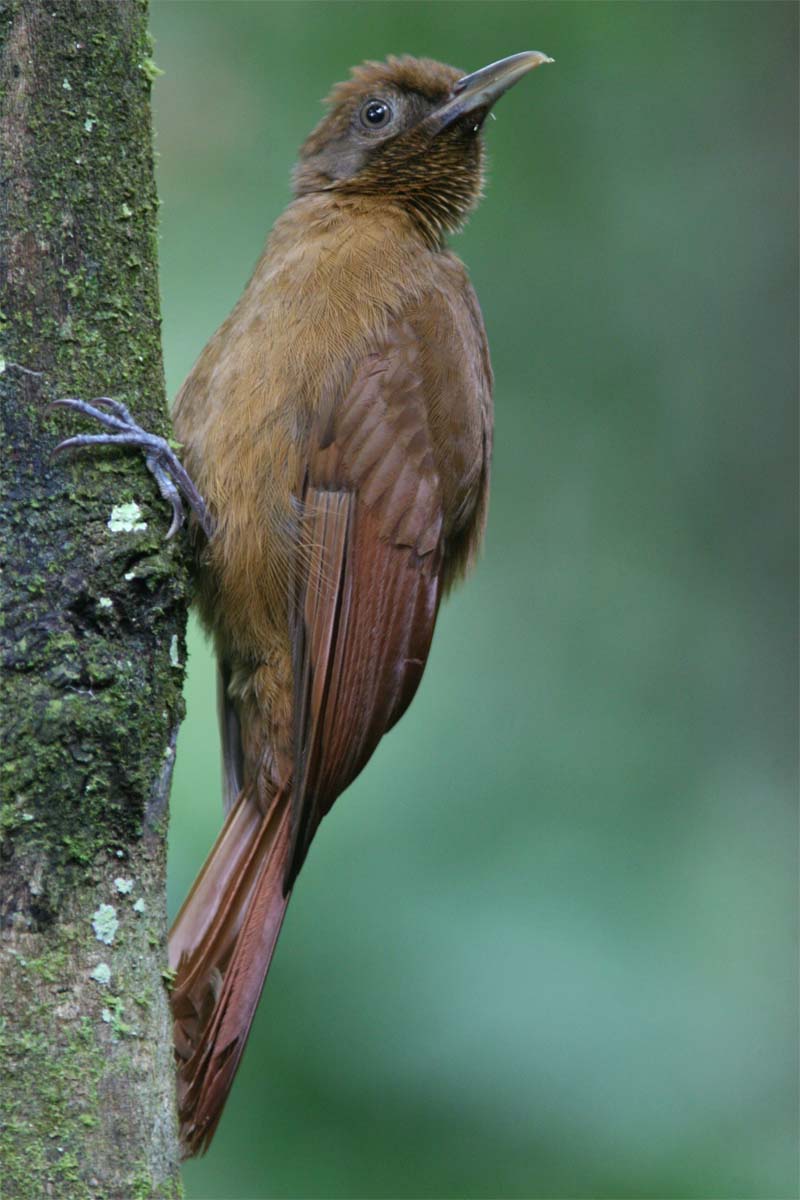
Dendrocincla fuliginosa
TAXONOMY
Dendrocincla fuliginosa Vieillot, 1818.
OTHER COMMON NAMES
English: Thrush-like woodcreeper; French: Grimpar enfumб;
German: Grauwangenbaumsteiger; Spanish: Trepatronco
Pardo.
PHYSICAL CHARACTERISTICS
Body length 8–8.5 in (19.5–21.5 cm). Has a stout, chiselshaped
bill. Overall coloration is rufous-brown, redder on the
rump and tail and lighter on the belly. There is geographic
variation in coloration among races of this widespread species.
DISTRIBUTION
Occurs throughout much of tropical Central and South America,
from Honduras in the north through to Amazonian Brazil,
Peru, and Bolivia. Also occurs along the Pacific coast of
Ecuador and Colombia.
HABITAT
Occurs in a range of types of humid tropical rainforest and in
mature secondary forest. Inhabits the lower part of the canopy.
Occurs as high as about 4,300 ft (1,300 m).
BEHAVIOR
Usually occurs singly or in pairs, or sometimes in small groups
in the vicinity of a swarm of army ants. The song is a prolonged
series of high-pitched notes.
FEEDING ECOLOGY AND DIET
Often attends swarms of army ants along with other species in
a mixed foraging flock. Forages from a perch on a tree trunk,
making sallies to catch insects disturbed by the ants. Also forages
for arthropods on bark surfaces.
REPRODUCTIVE BIOLOGY
Lays two or three eggs in a nest in a tree-cavity or abandoned
woodpecker hole. The sexes share incubation and care of the
nestlings.
CONSERVATION STATUS
Not threatened. A widespread and abundant species.
SIGNIFICANCE TO HUMANS
None known.
Other popular Animals
Photo Gallery of - Plain-brown woodcreeper




 Animalia Life
Animalia Life